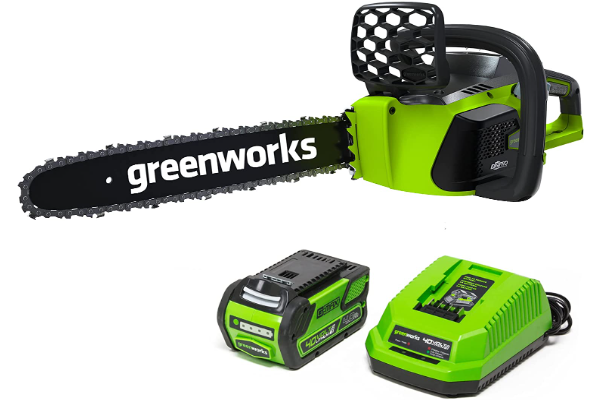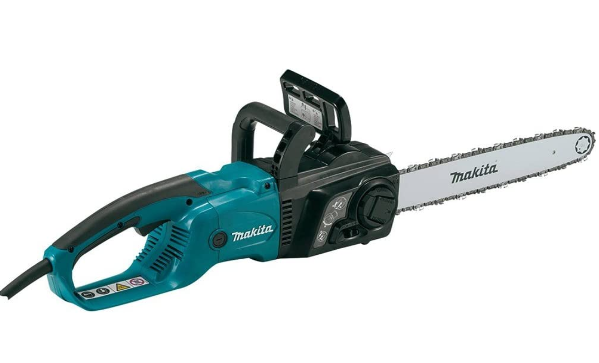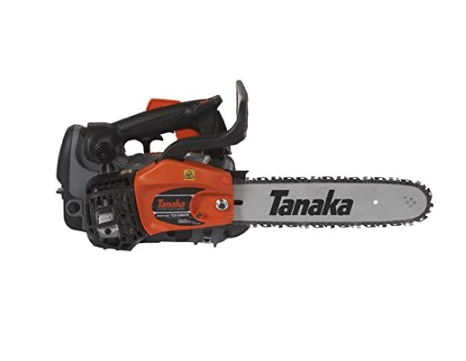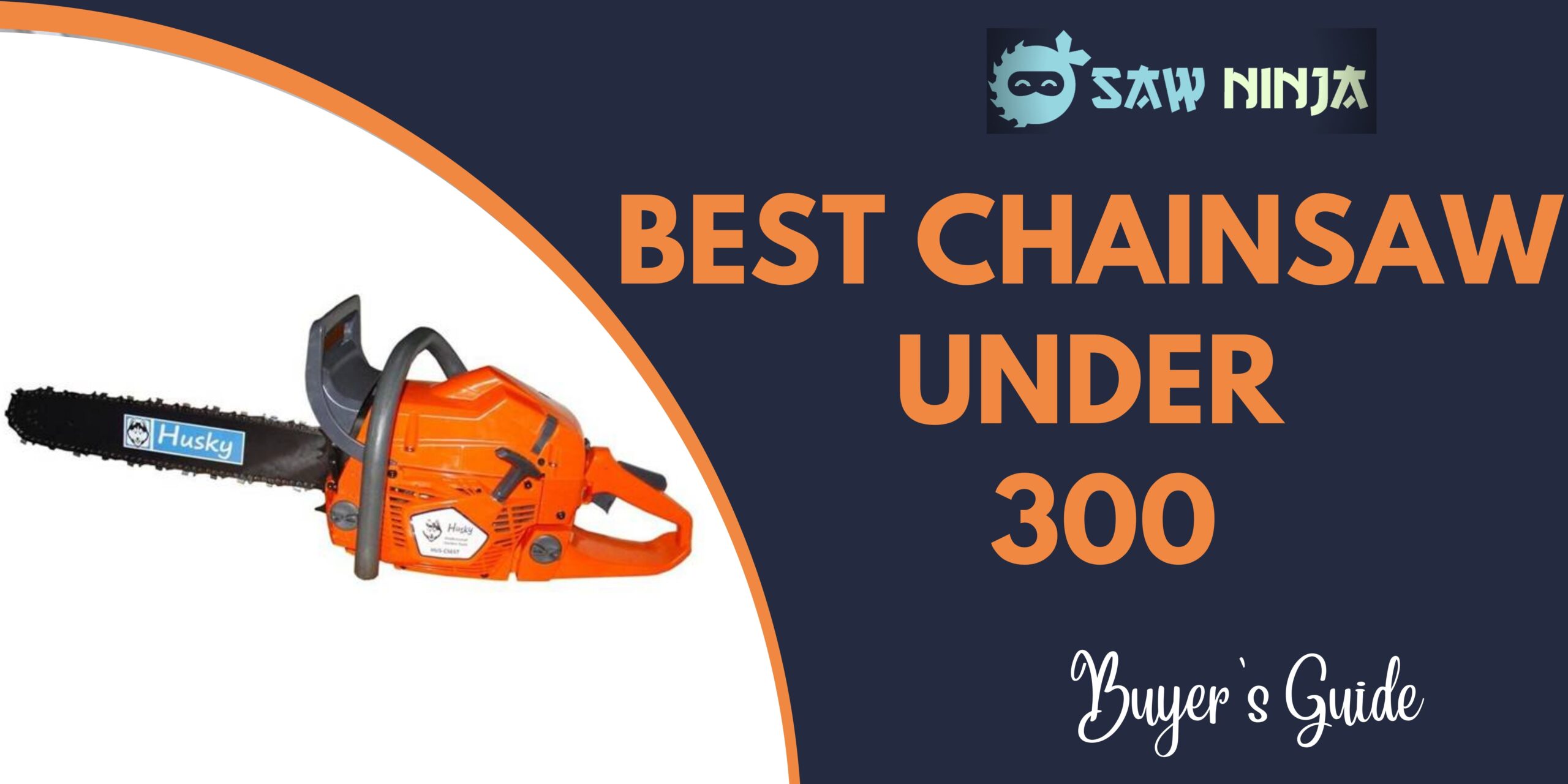When it comes to chainsaws, you want to make sure you’re getting the best one for your needs. Not all chainsaws are created equal, and some are better than others. If you’re looking for a quality chainsaw that won’t break the bank, then check out our list of the best chainsaws. These saws will get the job done without costing you a fortune. So whether you’re a homeowner or a professional contractor, these saws are worth checking out!
List of 6 Best Chainsaws in 2023

EGO Power+ CS1400
SPECIFICATIONS
Brand: EGO Power+| Item Weight: 8.3 Pounds| Item model number: CS1400
REASONS TO BUY
✓Lightweight
✓2. Powerful motor
✓3. Weather-resistant construction
✓4. Chain kickback brake
✓5. Chain tension adjustment
✓6.5-year limited warranty
REASONS TO AVOID
✗Battery life could be better (30-40 minutes on a single charge)
Starting with our first product, the EGO POWER+ CS1400 14-Inch Chainsaw, this is a model that’s specifically designed for homeowners and casual users. This product is best for light-duty tasks like trimming branches and cutting up firewood.
Features
It’s a lightweight saw at only 10.8 pounds, yet it packs quite a punch with its 6300 RPM brushless motor. The 14-inch bar and chain are perfect for cutting through smaller branches and limbs, and the weather-resistant construction means you can use them in all kinds of weather conditions.
The chain kickback brake is a nice safety feature, and the chain tension adjustment makes it easy to keep the chain tight and properly tensioned. This product also features a 5-year limited warranty.
Drawback
There are some downsides to this product as well. The smaller bar and chain length means it’s not suitable for larger cutting jobs, and the battery life is only about 30-40 minutes on a single charge.
Our Verdict
Overall, the EGO POWER+ CS1400 is a great chainsaw for the average homeowner or casual user. If you’re looking for a powerful and durable chainsaw that’s still relatively lightweight and easy to use, the EGO POWER+ CS1400 is a great option. We highly recommend this product.

Greenworks 40V
SPECIFICATIONS
Brand: Sunrise Global Marketing, LLC| Item Weight: 10.36 pounds| Batteries: 1 Lithium Ion batteries required. (included)
REASONS TO BUY
✓Trubrushless motor technology provides more power
✓2. Longer runtimes
✓3. Quiet operation
✓4. Extended motor life
✓5. Chain brake is a great safety feature
✓6. Automatic oiler delivers proper chain lubrication
REASONS TO AVOID
✗Bit on the expensive side
✗2. Not as powerful as some of the other chainsaws on our list
The next product on our list is the Greenworks 40V Chainsaw. This particular chainsaw is perfect for homeowners that need to tackle yard projects or storm clean-up. It is the best product for the value and it is one of the lightest saws on our list, coming in at just over 10 pounds.
Features
The Trubrushless motor technology provides more power, longer runtimes, quiet operation, and extended motor life. Additionally, the chain brake is a great safety feature that reduces the risk of injury. The automatic oiler delivers proper chain lubrication and increased productivity. And finally, the pro-style tensioning makes it easy to maintain the bar and chain. This chainsaw is also easy to use with a push-button start, and no gas or fumes. Plus, there’s no carburetor, no spark plug, and no starter rope.
Drawback
The drawbacks of this product are that it is a bit on the expensive side and that it is not as powerful as some of the other chainsaws on our list.
Our Verdict
Overall, the Greenworks 40V Chainsaw is a great choice for homeowners who need a reliable and easy-to-use chainsaw. We recommend this product because it is packed with features that make it a great value for the price.

Makita-UC4051A
SPECIFICATIONS
Brand: Makita| Item Weight: 2.2 pounds| ASIN: B00YFTA84U
REASONS TO BUY
✓Quality product
✓2Affordable
✓Tool-less blade and chain adjustments
✓Rubberized grip handles
✓Large trigger switch with soft start
✓Built-in current limiter
REASONS TO AVOID
✗Corded-electric chainsaw (need power source nearby to use)
The next product on our list is the Makita-UC4051A. It is the best chainsaw for people who have a shortage of budget and cannot afford a chainsaw.
Features
This chainsaw is a great option for those looking for a quality product that won’t break the bank. The Makita-UC4051A features a toolless blade and chain adjustments, rubberized grip handles, and a large trigger switch with a soft start. The built-in current limiter helps protect the motor from burnout by reducing power to the motor when the saw is overloaded. The large oil reservoir with a view window allows the operator to check the bar oil level.
>>>> How to Start a Flooded Chainsaw?
The Makita-UC4051A is a great choice for those looking for a quality chainsaw that won’t break the bank. This product also features a toolless blade and chain adjustment, rubberized grip handles, and a large trigger switch with a soft start. Another great feature of this product is the built-in current limiter which helps protect the motor from burnout by reducing power to the motor when the saw is overloaded.
Drawback
One downside of this product is that it is a corded-electric chainsaw, so you will need to have a power source nearby in order to use it. However, the Makita-UC4051A is a great choice for those looking for a quality chainsaw that won’t break the bank.
Our Verdict
We tested this product and found it to be a great choice for those looking for a quality chainsaw that won’t break the bank. I personally recommend this product. Overall this is a great chainsaw.

EGO Power+ CS16
SPECIFICATIONS
Brand: EGO Power+| Item Weight: 8.69 Pounds| ASIN: B01MCRWAH8
REASONS TO BUY
✓ Lightweight design
✓ Powerful battery
✓Easy-to-use controls
✓Intuitive control keypad with savE mode
✓Automatic chain oiler
✓Orange Husqvarna chainsaw bar cover included
REASONS TO AVOID
✗Not as powerful as some of the other chainsaws on our list
The next product on our list is the EGO Power+ CS16. This chainsaw is a great option for those who are looking for a powerful and durable chainsaw that won’t break the bank. This product is best for those who are looking for a powerful saw that can handle tough jobs.
Features
The EGO Power+ CS16 is a battery-operated chainsaw that is powered by a 56-volt lithium-ion battery. This saw has a 16-inch bar and chain that is made of stainless steel. The EGO Power+ CS16 has a 16-inch guide bar and a maximum cut diameter of 16 inches, making it a great choice for medium to large projects. It also has a chain kickback brake and a chain tension adjustment feature that makes it easy to keep the chain tight and prevent kickbacks. The EGO Power+ CS16 is also water resistant, so you don’t have to worry about it rusting or corroding. Another stunning feature of this product is its sleek and modern design. this product also features a 6800 RPM speed and a brushless motor that makes it one of the most powerful chainsaws on the market.
Drawback
One bad thing about this product is that it doesn’t come with a battery or charger. This means that you will need to purchase these items separately. However, the EGO Power+ CS16 is still a great value for the money. So, if you are looking for a powerful and durable chainsaw that
Our Verdict
The EGO Power+ CS16 is a great choice for those who are looking for a powerful, durable, and affordable chainsaw. It has a 16-inch guide bar and a maximum cut diameter of 16 inches, making it a great choice for medium to large projects. That’s why we highly recommend this product.

Husqvarna 14
SPECIFICATIONS
Brand: Husqvarna| Item Weight: 10.8 pounds| Batteries: 1 Lithium Ion batteries required. (included)
REASONS TO BUY
✓Lightweight design
✓ Powerful battery
✓Easy-to-use controls
✓Intuitive control keypad with savE mode
✓Automatic chain oiler
✓Orange Husqvarna chainsaw bar cover included
REASONS TO AVOID
✗Not as powerful as some of the other chainsaws on our list
The next product on our list of the best chainsaws is the Husqvarna 14-Inch 120i. This product is specially designed and made for those with small yards. This is a battery chainsaw that is equipped with a powerful 36V motor.
Features
This saw is one of the lightest battery-powered chainsaws on the market, making it ideal for pruning branches and felling small trees. The 40-volt battery gives you plenty of power to get the job done, and the intuitive control keypad with savE mode allows you to switch between maximum power and maximum runtime depending on the task at hand.
The automatic chain oiler delivers a steady supply of bar and chain oil for safe and effective use, and the Orange Husqvarna chainsaw bar cover included helps to protect your investment. This product also features an inertia-activated chain brake for safety while operating. This chainsaw has extremely low vibrations.
Drawback
Downsides of this product include the need to purchase bar and chain oil separately, and the fact that it is not as powerful as some of the other chainsaws on our list. However, for the average homeowner, this saw is more than enough to handle most tasks.
Our Verdict
We highly recommend this product because of its lightweight design, powerful battery, and easy-to-use controls. So If you’re looking for a powerful and lightweight chainsaw that is easy to use, the Husqvarna 14-Inch 120i is the perfect choice for you.

Metabo HPT Tanaka
SPECIFICATIONS
Brand: Tanaka Power Equipment| Item Weight: 11.9 pounds| Asin: B009KBOJY8l
REASONS TO BUY
✓Powerful and Reliable
✓Easy to Use
✓Commercial Grade Engine
✓Side Access Chain Tensioning
✓Sprocket Nose Bar
✓7-Year Warranty
REASONS TO AVOID
✗Expensive
✗Heavy
The next product on our list is the Metabo HPT Tanaka. This product is specially designed for those homeowners who are looking for a powerful chainsaw that can take on any type of tree or wood. Also, the best part of this product is that it comes at an affordable price.
Features
This is a 12-inch top handle chainsaw that uses a 32.2cc commercial grade pure fire engine. This provides a clean, powerful performance with less fuel consumption. The Metabo HPT Tanaka also has a half-throttle choke with a purge primer bulb for easy start and warm-up. Additionally, it has an automatic gear-driven oiler and a side access chain tensioning providing quick and convenient chain adjustment. Finally, the Sprocket nose bar with Oregon chain provides added control for easier cuts. The Metabo HPT Tanaka comes with a 7-year consumer, 2-year commercial, and 1-year rental warranty. Additionally, this product also features a fuel capacity of 9.9 fl oz and a fuel mix ratio of 50:1.
Drawback
One drawback of this product is that it is a bit on the expensive side. However, you are paying for a high-quality chainsaw that will provide you with years of reliable use. Another downside of this product is that it is a bit heavy, weighing in at 11.6 pounds. However, this is to be expected with a chainsaw of this size and power.
Our Verdict
If you are looking for a powerful and reliable chainsaw that is easy to use, then the Metabo HPT Tanaka is a great option for you. We recommend this chainsaw because of its many features and its quality construction.
Buying Guide
When looking for a chainsaw under 300 you need to consider a few things. Here are a few things that you should keep in mind.
Size
The size of the chainsaw is very important. You need to make sure that you get a chainsaw that is the right size for you. If you are a big person, then you will need to get a bigger chainsaw. If you are a smaller person, then you will need to get a smaller chainsaw.
Bar Length
The bar length is also very important. You need to make sure that you get a chainsaw with the right bar length. If you are going to be cutting down large trees, then you will need to get a chainsaw with a longer bar. If you are only going to be cutting down small trees, then you will not need a chainsaw with a long bar.
Power
The power of the chainsaw is also very important. You need to make sure that you get a chainsaw that has enough power to do the job that you want it to do. If you are only going to be cutting down small trees, then you will not need a very powerful chainsaw. However, if you are going to be cutting down large trees, then you will need a more powerful chainsaw.
Chain
The chain is also very important. You need to make sure that you get a chainsaw with the right chain. If you are going to be cutting down large trees, then you will need a stronger chain. If you are only going to be cutting down small trees, then you will not need a very strong chain.
Durability
The durability of the chainsaw is also very important. You need to make sure that you get a chainsaw that is durable enough to last for a long time. If you are only going to be using the chainsaw for a short period, then you will not need a very durable chainsaw. However, if you are going to be using the chainsaw for a long time, then you will need a more durable chainsaw.
Accuracy
The accuracy of the chainsaw is also very important. You need to make sure that you get a chainsaw that is accurate enough to do the job that you want it to do. If you are only going to be cutting down small trees, then you will not need a very accurate chainsaw. However, if you are going to be cutting down large trees, then you will need a more accurate chainsaw.
Safety
The safety of the chainsaw is also very important. You need to make sure that you get a chainsaw that is safe enough to use. If you are only going to be cutting down small trees, then you will not need a very safe chainsaw. However, if you are going to be cutting down large trees, then you will need a more safe chainsaw.
Ease of Use
The ease of use of the chainsaw is also very important. You need to make sure that you get a chainsaw that is easy enough to use. If you are only going to be cutting down small trees, then you will not need a very easy-to-use chainsaw. However, if you are going to be cutting down large trees, then you will need a more easy-to-use chainsaw.
These are just a few things that you should keep in mind when you are looking for a chainsaw under 300. You need to make sure that you consider all of these things before you buy a chainsaw.
FAQs
Which chainsaw brand is most reliable?
There are a lot of different chainsaw brands out there, and it can be tough to know which ones are the most reliable. However, some brands that are generally considered to be reliable include Stihl, Husqvarna, and Echo.
What is a good chainsaw for money?
There are a lot of different chainsaws out there, and it can be tough to know which one is the best for the money. However, some chainsaws that are generally considered to be good for the money include the Stihl MS170, the Husqvarna 240, and the Echo CS-400.
How long will a STIHL chainsaw last?
STIHL chainsaws are generally considered to be very durable, and they can last for many years with proper care and maintenance. However, the exact lifespan of a STIHL chainsaw will vary depending on the model and the individual chainsaw.
What does CC mean for chainsaws?
CC stands for cubic centimeters, and it is a measure of the engine size of the chainsaw. The larger the CC number, the more powerful the chainsaw.
Which chainsaw is the easiest to start?
There are a lot of different chainsaws out there, and it can be tough to know which one is the easiest to start. However, some chainsaws that are generally considered to be easy to start to include the Stihl MS170, the Husqvarna 240, and the Echo CS-400.
What is the best chainsaw bar length?
The best chainsaw bar length will vary depending on the specific needs and requirements. However, some general guidelines for chainsaw bar lengths include 16 inches for small jobs, 18 inches for medium jobs, and 20 inches or more for large jobs.
Conclusion
So, what is the best chainsaw for you? Well, it depends on your needs. If you are looking for a powerful saw that can handle heavy-duty jobs, then the EGO Power+ CS1400 might be a good option. However, if you are just starting and don’t need all that power, the Greenworks 40V might be more suited to your needs. Whichever saw you choose, make sure to read the reviews before making your purchase and get familiar with how to use it safely and effectively. Thanks for reading our guide!










 mething else to hold it up. It is often used in carpentry or other construction work. A sawhorse can be made out of wood, metal, or plastic.
mething else to hold it up. It is often used in carpentry or other construction work. A sawhorse can be made out of wood, metal, or plastic.
















